
Every client that I work with has his or her own unique problems, but they all have one thing in common.
Can you guess what it is?
Regardless of industry, size, or even the person’s position within the company, everyone uses email and wants to know how to write email that customers open.
Despite the rise of social media, forums, and mobile chat apps, email remains one of the most popular forms of communication in the world.
According to a study from Radicati, there are over 3.7 billion email users worldwide, and that number is steadily rising.

If you think that statistic is high, you’ll want to sit down before I tell you the volume of emails being sent.
We’re sending and receiving 269 billion emails every day. It seems impossible to stick out in this crowd.
Yet email remains one of the most effective channels of marketing, with a median ROI that’s nearly 5x that of other channels like social media, direct mail, and paid search.
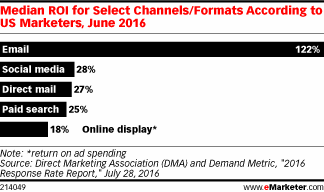
Adobe even found that half of all consumers prefer being contacted by brands via email over social media and direct mail.
Email newsletters specifically have the highest reported positive experience by consumers in a recent survey.
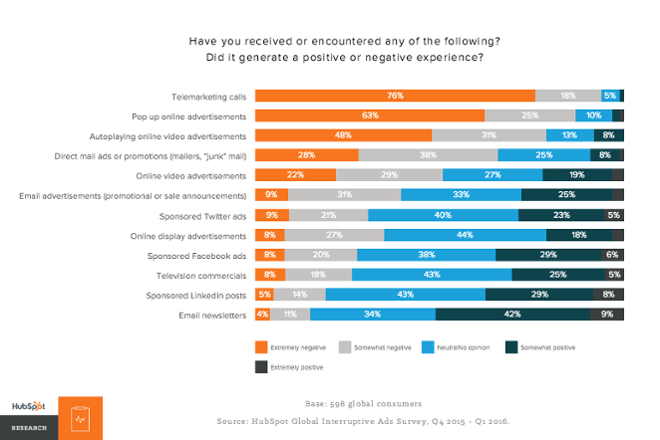
Of course, knowing email is effective and writing an effective email doesn’t necessarily go hand-in-hand.
If you send the wrong emails, you’ll end up losing customers. In fact, 66% of people unsubscribe from emails because they’re not aligned with their interests.
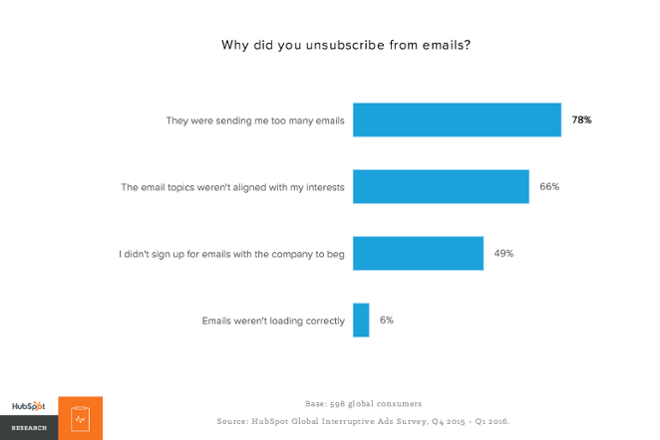
You need great emails to keep your customers happy.
That’s the problem I’m going to alleviate for you today.
You know all the reasons why you should be using email, but we’re going to dive into the nitty-gritty details of how to actually write these emails.
The first step is to segment our email lists so we can target our emails to the right audiences.
How to Write Emails With Proper Audience Segmentation
We know email is effective, but we don’t have time to personally email each and every customer on our lists. Each email needs to feel personal, though.
When your customers are properly segmented, it’s easier to send emails that feel more personalized.
Messages will be based on your target customers’ interactions with your company and website. As a result, they won’t feel generic, sporadic, or irrelevant.
A recent survey by Ascend2 found that 51% of marketers consider email list segmentation to be the most effective personalization tactic.
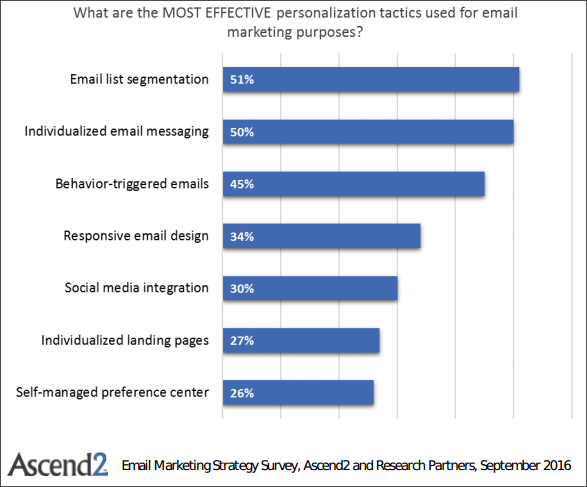
Did a customer recently make a purchase from you?
A thank-you email explaining the benefits of the purchase can help you keep your brand front-and-center in that customer’s mind.
Perhaps a prospective customer abandoned his or her shopping cart before taking the next step and purchasing a product. Consider sending a discount code to entice that person back.
MailChimp recently measured 11,000 segmented campaigns against non-segmented campaigns from the same customers. It found that the segmented campaigns outperformed their non-segmented counterparts across every metric.
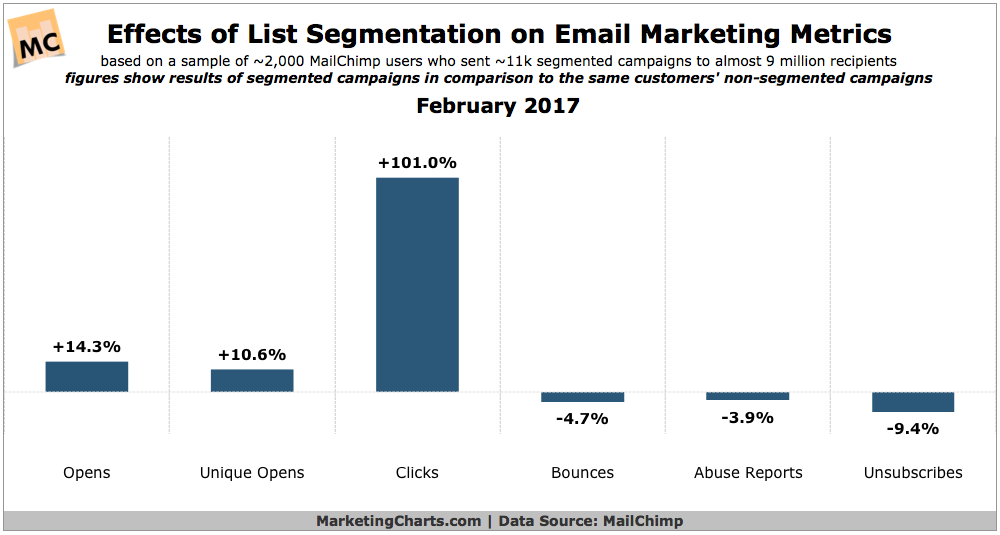
So what are some ways to segment your customer lists?
Basic demographics like age, sex, and location are a great place to start. They’re not always enough, but they’ll help you get started.
You’re likely going to speak differently to a retired veteran than you would to a teenager or recent college grad. Also, men and women may respond differently to the language you use in email marketing.
Of course, this type of personal information may not be available. It’s also not the most effective way to segment audiences.
Marketing automation platform MailChimp offers a variety of popular audience segmentation options based on engagement, behavior, and other criteria that you might find useful.
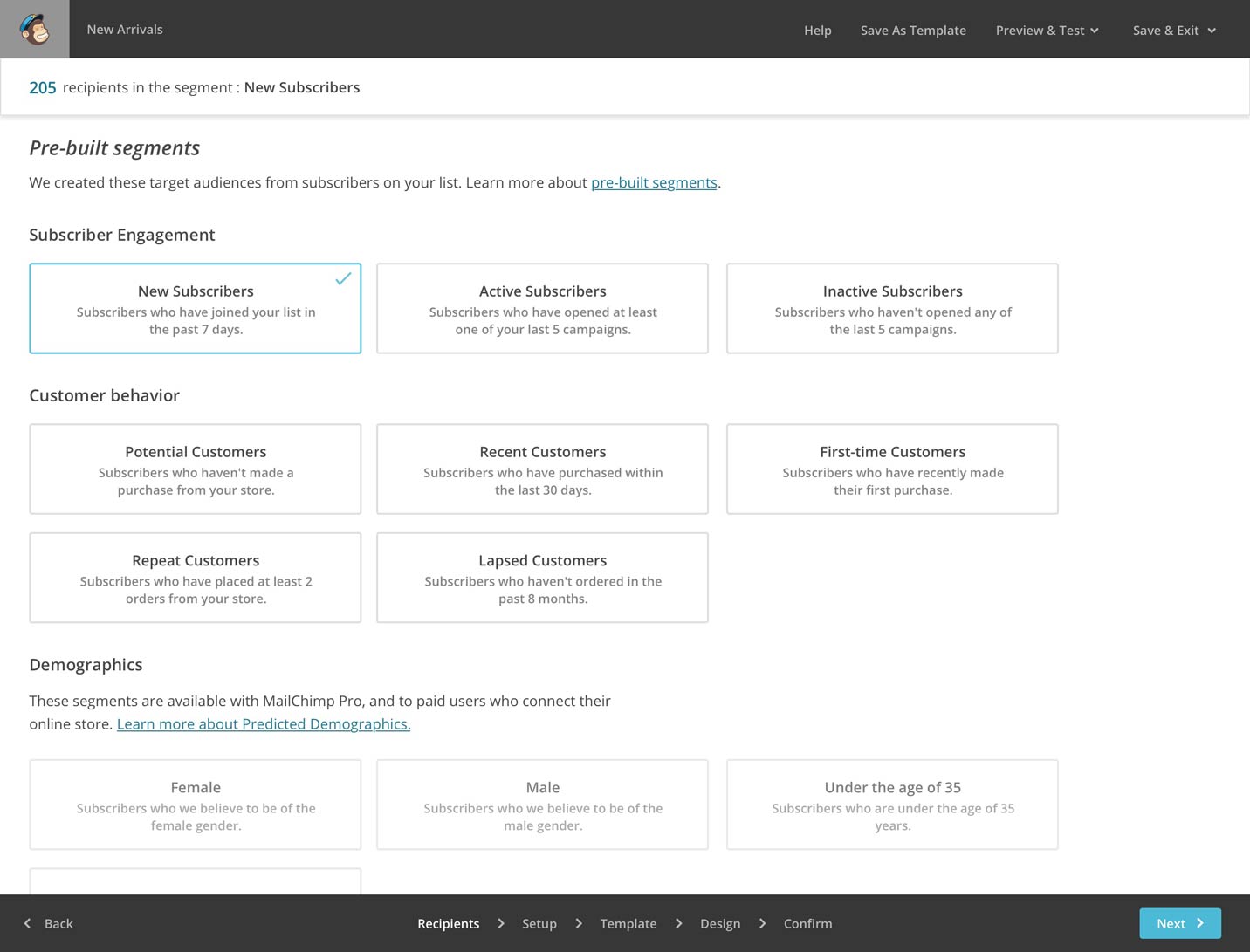
These behavioral triggers are actually much more likely to predict a customer’s response anyway. Recommended purchases, for example, work regardless of age, sex, or location.
Behaviors like buying, canceling, subscribing, and cart abandonment can be easily addressed with personalized emails.
Ideally, you’ll send the right message to the right consumer at the right time. It sounds impossible, but modern marketing technology makes it not only accessible, but also automated.
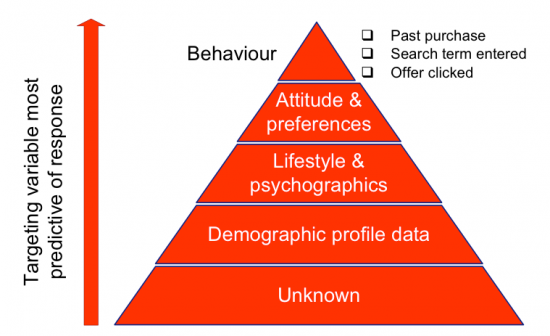
Behavior triggers stand out as one of the most effective innovation opportunities for markers. Marketers can analyze behavior triggers among their audiences to find strategies that really work.
If you can set up an email marketing strategy that actually makes consumers eager to open your emails, you stand to enjoy much greater conversion rates.
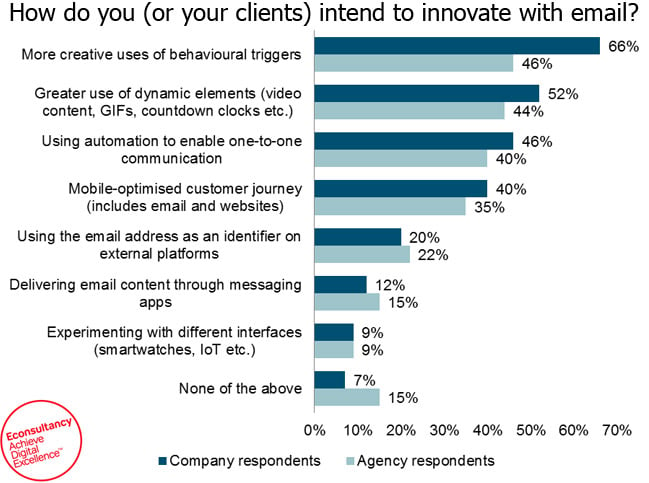
As mentioned above, behavior segmentation also makes it easier to automate emails.
Marketing automation is an important part of the sales cycle, and you’re essentially leaving money on the table by not employing it.
Don’t miss out on this opportunity!
Charity: Water, for example, has a great email automation campaign that tracks the progress of your donation to the organization.

When we donate money, we rarely get to see how the money is being spent. In fact, it’s one of the key barriers that nonprofits face when attempting to raise funds.
Automated emails that provide useful data provide personalized transparency to the process. Consumers feel like they understand their role in the equation.
Now we have our customer lists segmented into the right groups, and it’s time to craft the right emails for each group.
To do that, we need to decide what our goal for each segment is and work backward from there.
How to Write Email by Building Backward From the Goal
It’s important to have a goal for your email campaign. Otherwise, you’re just firing off emails and hoping to resonate with your audience.
Not a good strategy.
There are only four basic types of emails you can write:
- Narrative: Tell a compelling story.
- Descriptive: Illustrate your product or service with words.
- Expository: Teach your audience how to do something.
- Persuasive: Convince readers to take action.
Each type will have a different tone and goal.
Let’s say your goal is to persuade customers to complete a post-purchase survey about their experience.
There needs to be a clear CTA, preferably graphic, that entices users to click. That should be the focus of a short email that concisely explains the benefit of taking the survey.
Here’s an example of a persuasive email from Wayfair.
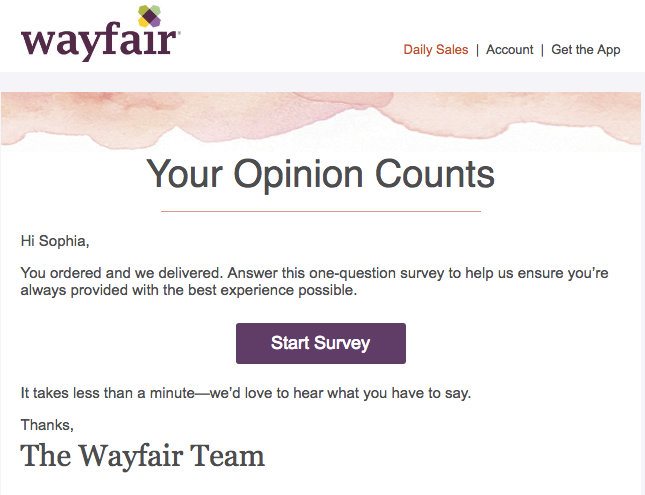
On the other hand, an expository email provides all the facts necessary for a customer to understand a topic.
These are typically newsletters, but not always.
In the case of this GrubHub email, the goal is an order confirmation displaying all the relevant information about your order.
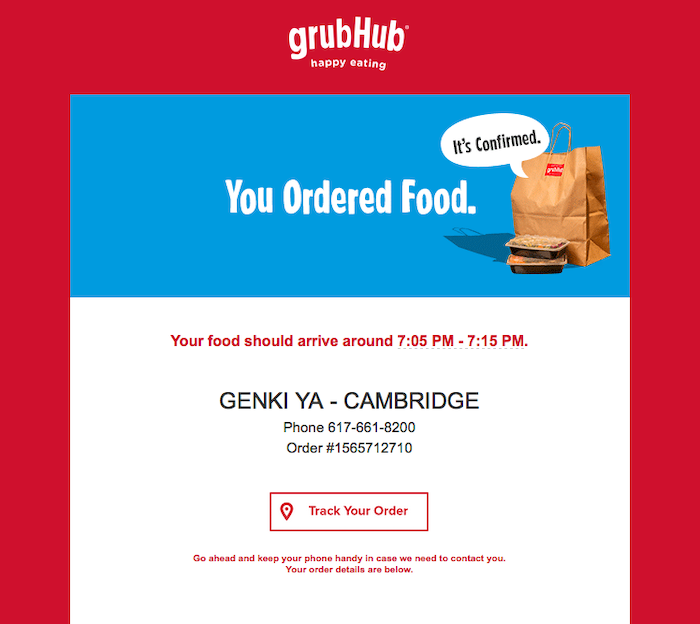
Descriptive emails are typically announcements for new products. They allow you to generate buzz (and hopefully a few sales). Here’s a descriptive menu from Cook Smarts.
Plus, descriptive emails give you a chance to show your passion for your products. Here’s a descriptive menu from Cook Smarts.

And finally, we have the narrative email, which allows you to tell your brand story. Here, Poncho turns an ordinary weather report into a narrative infographic.

Right now we’re going to try an exercise. Think of all the different types of emails you may send to your customers based on their behaviors and other events.
New product releases, leadership changes, sales and promotions, thank-you emails for customers’ order, emails that tell customers you’re sorry to see them go, responses to abandoned carts, and holiday celebrations immediately come to mind.
The next step is to decide the goal for each of these behaviors. What do you want the customer to do?
You typically want a click-through to your website. You can also use a CTA to ask for a purchase or to deliver relevant content.
Creating these templates in advance keeps customers feeling personally connected to your business while you save time and resources.
5 Steps to Write the Perfect Email
Now you know why you should be emailing your customers. You’re also familiar with the different types of emails you might send.
What we need to do is nail down a replicable process for writing them.
Of course, you must start with a list of subscribers. Collect email addresses from your fans and followers so you’re communicating with as many people as possible.
Once you have a list, you can write emails that respond to the behavioral triggers I talked about above.
Here’s where to start.
1. How to Write Email Subject Lines
You only get one chance to make a first impression, and the subject line is that chance for emails.
The subject line determines whether or not your email is ever read. A recent survey found that 33% of email recipients open an email based on the subject line alone.
You have to nail that first impression if you want your copy to get read.
The email marketing specialists at Constant Contact have seen thousands of effective emails. The company offers a few tips for subject lines (along with great examples of winning formulas).
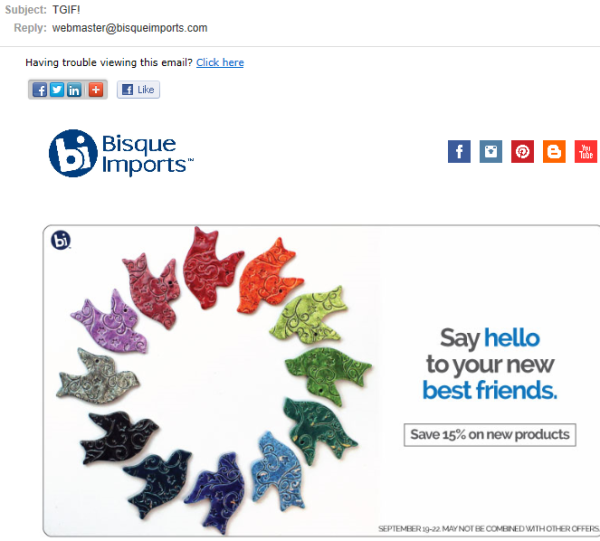
It’s important to keep the subject short and snappy. Many email programs cut off long subject lines, which means your subscribers won’t see the whole thing. Above, there’s an example with just a simple acronym from Bisque Imports.
Everyone knows what TGIF means, so it works. However, you can also use other types of language to get your emails read.
A teaser or announcement can provide a great way to entice people to click through and read. People love a mystery or an opportunity, so they’re more likely to check out the email’s body if the subject line arouses their interest.
Check out this example from FluentCity announcing the winners of a recent contest.

Whatever you do, avoid spammy language like “Buy Now.”
You don’t need to be overly promotional. Focus on being informative and entertaining.
In fact, entertaining and/or funny subject lines are a great way to increase the chances of an email being opened.
Check out this gem of a subject line from The Basketry.
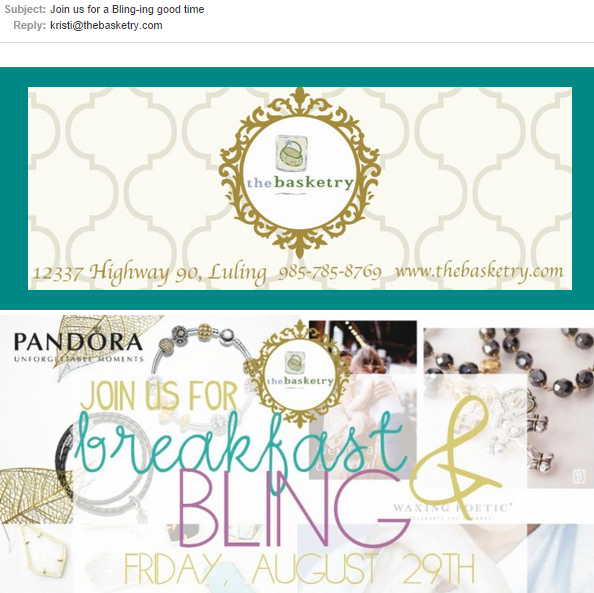
Nice pun, right?
Once you have the right subject, it’s time to move on to the content of the email body.
2. Keep Emails For Customers Short and Friendly.
The worst mistake you can make with an email is trying to cram too much information into an email. The document ends up being too long.
Sure, people need to know relevant information, but you can spread out the information over several emails.
Alternatively, you can link to pages on your website so the reader can seek out more details if he or she wants.
Whatever the case, don’t waste your subscribers’ time. That’s the fastest way to the “unsubscribe” button.
A simple teaser with a link to your website is all that’s needed.
Check out this simple example from Postmates, which invites customers to click through for a limited-time offer of lattes on demand.
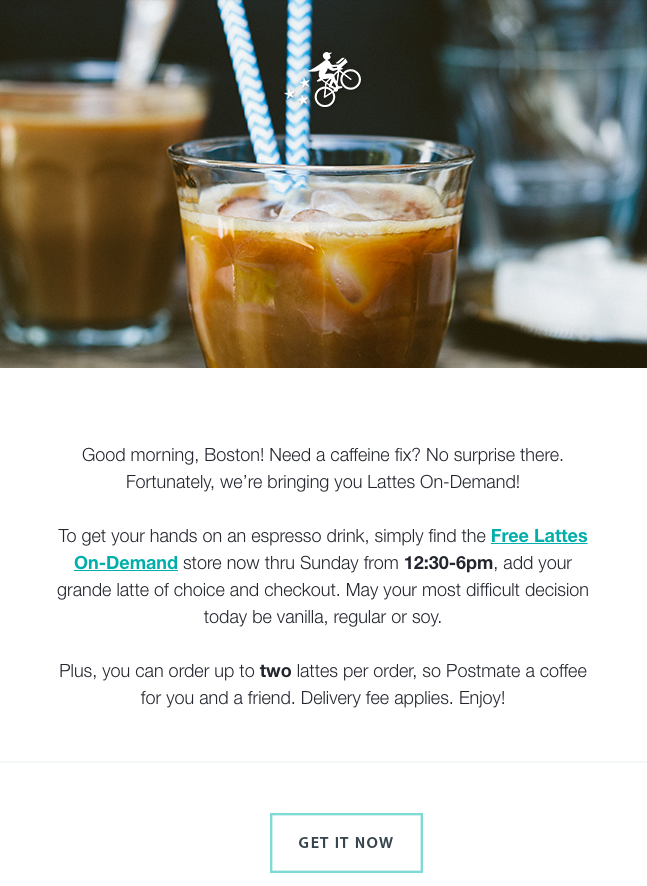
The company doesn’t waste any time getting to the point. There’s a brief, three-word greeting, and then the company immediately jumps into the point of the offer.
After we get a description of the offer, we’re immediately given a CTA button to click through and take advantage of the offer.
This short, sweet, and to-the-point approach is how every email should be treated. We only spend 15-20 seconds reading an email, so it shouldn’t resemble a novel.
There’s a lot of information to fit in such a small space, though, so how do we decide what to cut and what to keep?
Let’s explore that.
3. Write Better Emails by Adding Relevant Information and Calls to Action.
Journalists are required to find out the who, what, when, where, why, and how of a story before publishing. That’s a standard we’re going to set for our emails.
Each email we send needs to answer these vital questions.
Say we have a weekend sale coming up.
The sale is the what, our store location is the where, our business is the who, the holiday is when, special pricing is why, and showing up is how it’s done.
Without this information, your recipients will be lost.
It’s also vital to have a CTA or buy it now buttons. Otherwise, how can your customers take action?
These buttons offer great ways to entice clicks, but before using these advanced techniques, make sure your customers can view them on mobile devices.
Nearly half of emails are checked on mobile devices.
It’s a shame to spend time crafting a brief, compelling email only to experience limited engagement because of mobile incompatibility.
Don’t become that marketer.
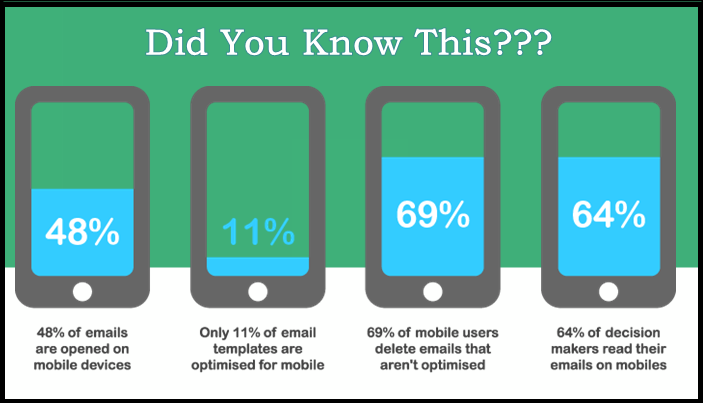
Now we need to make sure each customer feels individually conne
source https://neilpatel.com/blog/write-emails-that-drive-results/
No comments:
Post a Comment